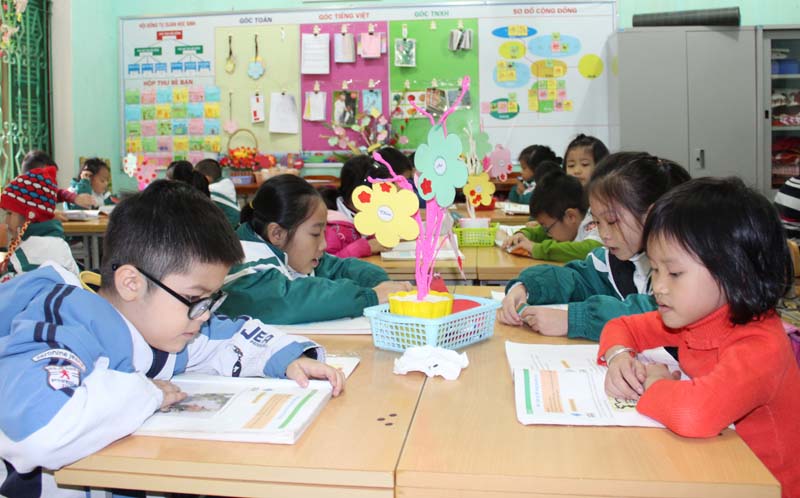
(HBO) – There are 58 out of 84 local primary schools in Hoa Binh province meeting national standards, accounting for 69 percent. Of them, 51 meet level 1 while the remaining level 2.
Mai Chau elementary school in
Mai Chau district meets national standards.
While building primary schools up to national
standards, the province met difficulties such as 86 out of 210 communes living
in especially poor situation, accounting for 40.9 percent, and unfavourable conditions
for socio-economic development.
Nguyen Thi Hong Diem, head of the elementary
education office from the provincial Department of Education and Training, said
schools worked closely with parents to care for students. Schools’ parent
boards have pooled public support to improve infrastructure and teaching
conditions. Several localities reaped achievements in the effort such as Ky Son
100 percent, Yen Thuy 78 percent, Tan Lac 69 percent and Luong Son 67
percent.
Over the past two decades, infrastructure in
local schools has been upgraded, from campuses to facilities and equipment.
Improving infrastructure positively impacts task fulfillment and education
results, thus meeting demand for education-training cause. The campaign on
building national-standard schools is not only the task of education sector but
also welcomed by the political system and local people.
Many wards, communes and townships have increased
land funds for schools to help them meet national standards. Each academic
year, the province has additional 5-8 primary schools meeting national
standards.
Apart from achievements, several shortcomings
still exist such as slow construction. Over the past two decades, 86 primary
schools have met national standards, accounting for 65.2 percent. Investment in
building national-standard elementary schools in several districts is
unbalanced. The rate of national-standard elementary schools is low in several
localities such as Da Bac (33 percent), Lac Son (40 percent) and Kim Boi (44
percent)./.
The Department of Education and Training of Hoa Binh province held a conference on March 18 to review the performance of the "Safe and Happy School" Project and set out tasks for 2025. The project, funded by the Taiwan Fund for Children and Families (TFCF), aims to create a safe, inclusive, and supportive learning environment for students. The event saw the attendance of representatives from the TFCF and 26 beneficiary schools.
With over 70% of their workers being women, trade unions across industrial parks (IPs) in Hoa Binh have been actively safeguarding their legal rights and interests while implementing initiatives to improve their income and well-being.
In recent years, the Hoa Binh provincial General Hospital has continuously innovated itself and improved the quality of medical services to meet the increasing needs of local people. With substantial investments in infrastructure and modern equipment, along with a team of highly qualified doctors and nurses, the hospital has gradually established itself as one of the leading medical units in the Northwestern region and a trusted destination for healthcare for people inside and outside the province.
From mastering the fundamentals of programming to achieving national recognition, the Programming Club of the Le Van Tam Primary School (STAR LVT28) in Hoa Binh city has made remarkable strides in the field of robotics.
The Ho Chi Minh Communist Youth Union Committee and the Vietnam Youth Federation chapter of Hoa Binh province organised a programme on March 12 to launch the "Digital Literacy" movement and an online quiz on the resolutions of the Vietnam Youth Federation congresses at all levels, as well as the Politburo's Resolution No. 57-NQ/TW on breakthroughs in the development of science, technology, innovation, and national digital transformation.
As climate change grows more unpredictable, the development of production forests has become essential - not just for economic growth, but for safeguarding the environment and maintaining ecosystem balance. By boosting local incomes, curbing natural disasters, preventing soil erosion, and protecting water resources, these forests play a crucial role in sustainable development.



